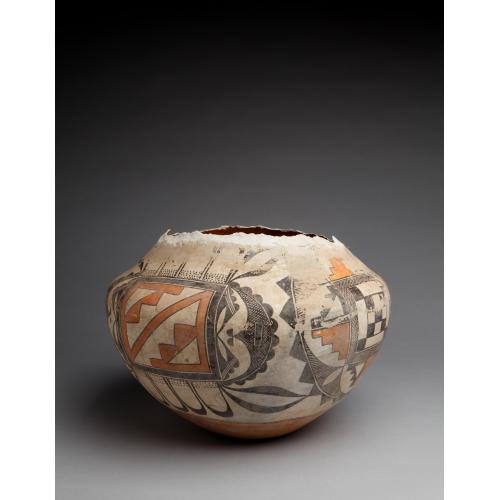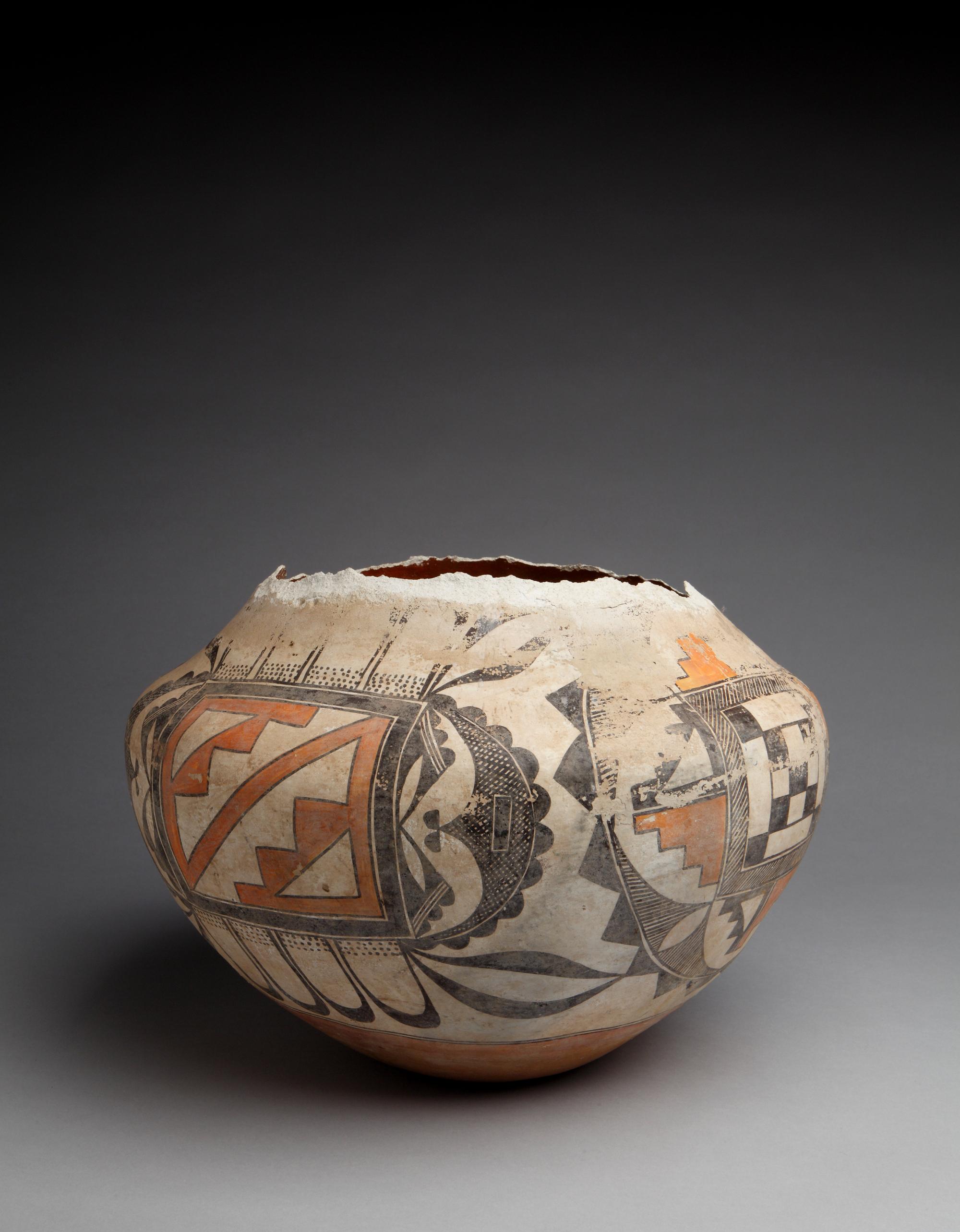
Photograph by Addison Doty. Copyright 2014 School for Advanced Research.
Water jar
Date: before 1937
Artist or Maker: Unknown
Dimensions:
Dimensions: 9 5/8 × 13 in. (24.5 × 33 cm)
Weight: 1.5 kg (3.4 lb.)
Medium: clay | paints
Credit Line: Gift of the Estate of Amelia Elizabeth White, 1974.
Place Made:
Valencia County, New Mexico, Southwest, United States, North America
Object Number: SAR.1978-1-232
Not on view
Tribal Collection Review RemarksAccording to the participants in the Acoma collection review visit April 22-24, 2015 (Events Record “Collection Review: Acoma Pueblo, Review 1”): This pot is very light although it is slightly thick through the middle. The design has four panels with two different designs that mirror each other on opposite sides. The circular design has a central hachured square with a checkerboard design. On each side of the square are sets of and sun/sunrays (orange filed stepped triangle) and mountains (black stepped triangle) with rain lines towards the exterior. The second design is similar to a bird design. It has a central black bold rectangle with a stepped orang filled sun/sunray at the center. There are four “U” shaped motifs on the both the top and the bottom of the rectangle. On the sides are half circle motifs with rain lines and plant/leaves.
There are drips of white wax in a few spots on the surface of the jar. No comments were made regarding the rim of the jar.
According to the participants in the Acoma collection review visit February 26-27, 2019 (Events Record “Collection Review: Acoma Pueblo Review 12”): The shape of a water jar is characterized by usually having a concave base (can also have a flat base) leading to a wider body and shoulder area. The shoulder, which is typically rounded but can also be sharp, leads inward and up to the neck and opening of the water jar. Historic water jars will sometimes have an indentation from the base the pot was built on (also known as a puki).
Water jars of all sizes are made and used. Medium to small size water jars are more commonly used to carry water as the weight of a filled water jar can become quite heavy. Large sized water jars would be used for storing water. Today at Acoma, water jars are still being used and made in both traditional natural and commercial materials.
In Collection(s)
The Indian Arts Research Center, in collaboration with Native American community scholars, strives to present accurate collections records. Records may be updated as new information becomes available and is reviewed with the Native American community having cultural affinity to particular items. Please write to iarc@sarsf.org if you have questions or concerns related to the documentation.
